Best Healing Destinations 2025: Wellness Travel & Recovery Ideas
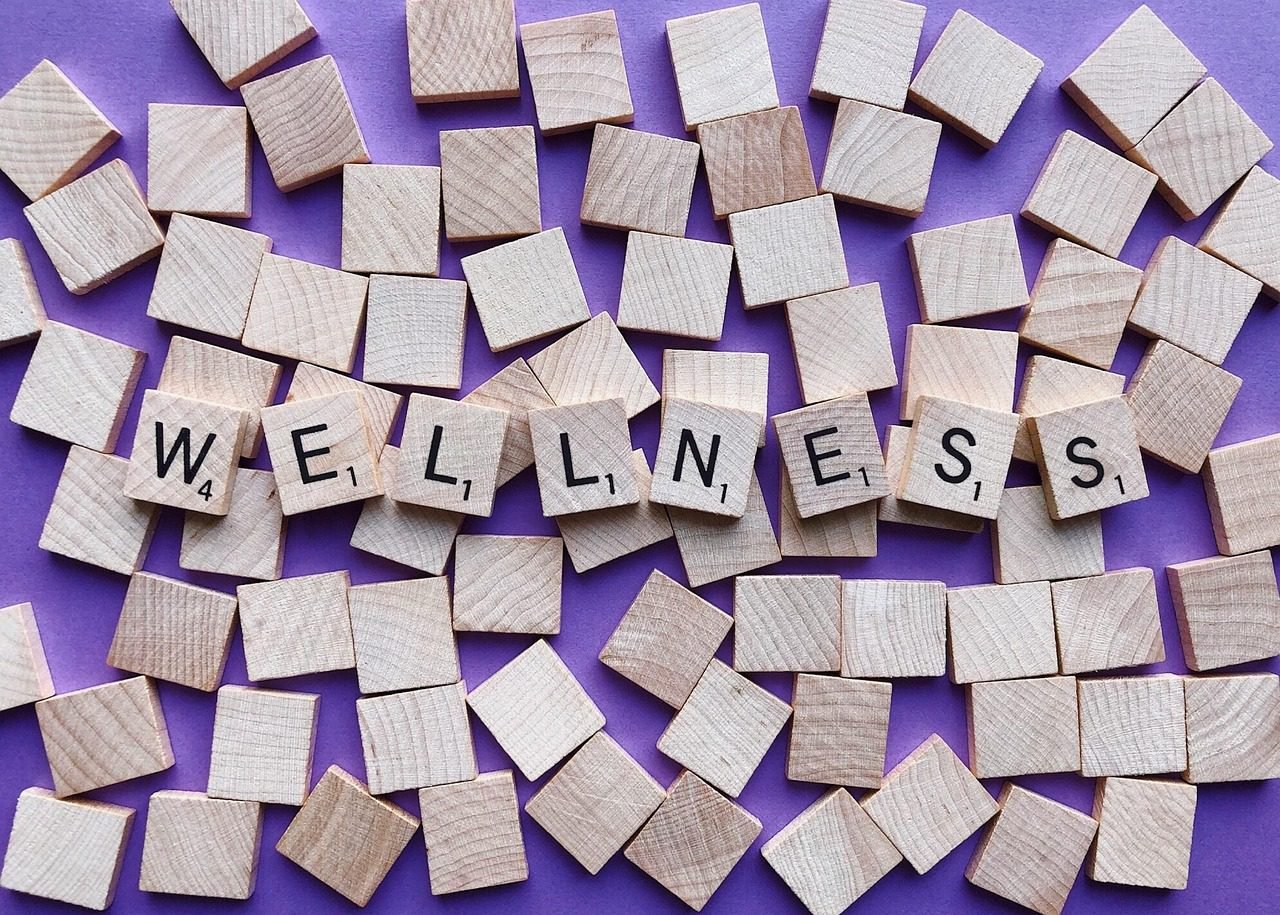
The concept of travel has evolved dramatically over the past decade. What was once primarily about sightseeing and entertainment has transformed into something more profound: a journey toward healing and personal transformation. This guide introduces you to the Best Healing Destinations around the world now form a distinct category of travel experiences that prioritize wellness, recovery, and personal growth over traditional tourist activities.
Why Wellness Travel is the New Luxury
Wellness travel represents a fundamental shift in how we approach vacations, moving from mere escapism to intentional restoration.
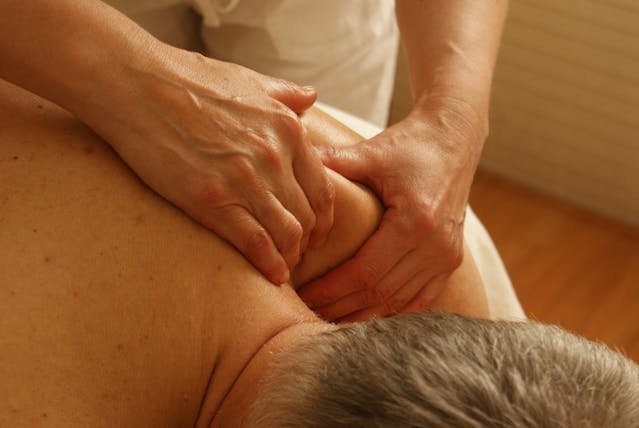
The Best Healing Destinations curate environments and experiences specifically designed to address modern life’s physical, mental, and spiritual challenges.
This emerging travel philosophy recognizes that the most valuable souvenirs aren’t photographs or trinkets but renewed vitality and perspective.
Unlike conventional vacations that often leave travelers needing “a vacation from their vacation,” the Best Healing Destinations are specifically designed to send you home feeling better than when you arrived.
These transformative destinations provide structured opportunities for physical rejuvenation, mental clarity, emotional processing, and spiritual connection that aren’t typically available in our busy daily lives.
From Japanese forest bathing retreats to Mediterranean thalassotherapy centers, these extraordinary places harness natural elements, traditional wisdom, and contemporary science to facilitate deep healing.
Wellness tourism isn’t just for the spa enthusiast or yoga practitioner. Its benefits extend to anyone seeking reprieve from modern life’s constant demands—from the burnt-out professional to the grief-stricken individual, from those recovering from physical ailments to those simply wanting to deepen their self-awareness.
Recent trends show wellness travel has expanded well beyond luxury resorts, with options now available for diverse budgets, interests, and needs.
According to the Global Wellness Institute, this sector was growing twice as fast as general tourism before the pandemic, and post-pandemic numbers show an even sharper increase as health consciousness becomes a primary concern for travelers worldwide.
In the aftermath of global lockdowns and health crises, wellness travel has gained new dimensions.
Travelers now seek destinations that offer not just relaxation but immunity enhancement, mental health support, and authentic connections with nature and local communities—a comprehensive approach to rebuilding resilience in uncertain times.
What Makes a Destination Truly “Healing”?
Not all beautiful places have healing properties, and not all wellness centers create truly transformative experiences.
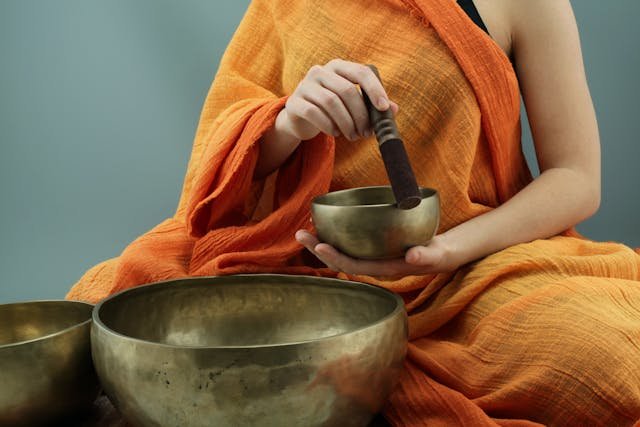
Genuinely restorative environments combine several essential elements that work in concert to facilitate healing.
The most effective healing landscapes provide a perfect balance of safety and stimulation. They offer enough security to allow the nervous system to relax while providing novel experiences that engage the senses and inspire wonder.
This delicate balance activates the parasympathetic nervous system—our “rest and digest” mode—while simultaneously engaging our innate curiosity.
Natural features play a crucial role in creating healing environments:
| Natural Element | Healing Properties | Example Destinations |
|---|---|---|
| Water bodies | Negative ion production, sound therapy, buoyancy | Coastal Greece, Scandinavian fjords, Japanese onsen |
| Forests | Phytoncides, fractals, reduced visual stimuli | Kyoto’s bamboo forests, Black Forest Germany, Pacific Northwest |
| Mountains | Air quality, perspective, challenge | Swiss Alps, Blue Ridge Mountains, Himalayan foothills |
| Desert landscapes | Stillness, clarity, circadian reset | Arizona’s Sonoran Desert, Moroccan Sahara, Australian Outback |
| Volcanic areas | Mineral-rich soils, thermal activity | Iceland’s geothermal regions, Italy’s Ischia, New Zealand’s Rotorua |
Local culture profoundly shapes wellness experiences through traditional healing practices, cuisine, and social structures that often prioritize well-being over productivity.
The most authentic healing destinations seamlessly integrate local wisdom rather than imposing standardized wellness concepts disconnected from their surroundings.
Accessibility—both physical and psychological—determines whether a destination can fulfill its healing potential.
This includes considering mobility needs, cultural barriers, language differences, and creating environments where diverse visitors feel truly welcome and safe to engage in vulnerable healing processes.
In recent years, certifications and standards have emerged to help travelers identify genuine healing destinations.
Organizations like EarthCheck, Global Sustainable Tourism Council, and Healing Hotels of the World provide frameworks for evaluating a destination’s commitment to authentic wellness practices, environmental sustainability, and community integration.
Top Healing Destinations for Mental Renewal
Forest Bathing in Japan: The Original Green Therapy
Japan’s practice of shinrin-yoku (forest bathing) offers a scientifically validated approach to mental restoration.

The ancient cedars of Yakushima Island and the moss-covered forests of Shiratani Unsuikyo Ravine provide perfect settings for this practice, where visitors move slowly and mindfully through forest environments, engaging all senses without digital distractions.
Research shows that just 15 minutes of forest bathing can decrease cortisol levels by 12%, reduce blood pressure, and improve concentration.
The phytoncides (antimicrobial compounds) released by trees strengthen immune function while the visual patterns of branches and leaves help reset an overstimulated mind.
Scandinavian Retreats: Nordic Simplicity
The Nordic approach to wellness embodies the concept of lagom (just enough) and friluftsliv (open-air living).
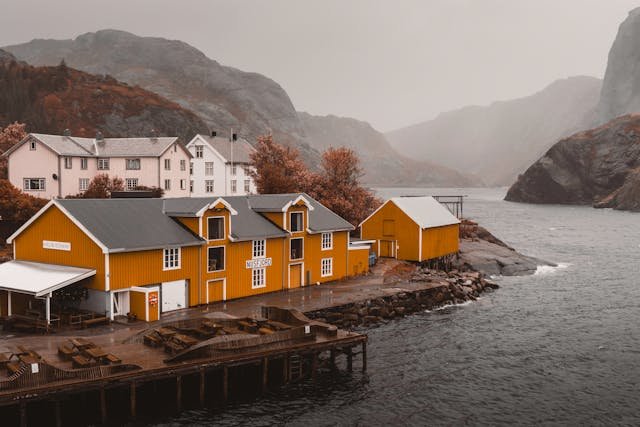
Swedish and Finnish retreats typically combine minimalist design with immersive nature experiences.
The absence of excess stimulation creates mental space for presence and reflection.
Finland’s lakeside wellness centers, where sauna rituals alternate with cold water immersion, offer particular benefits for mental clarity.
The extreme temperature contrasts trigger norepinephrine release, improving focus and mood regulation.
The traditional Finnish approach of minimal conversation during these experiences naturally guides participants into meditative states.
Bali: Spiritual Recalibration
Bali’s unique combination of Hindu traditions, lush landscapes, and established wellness infrastructure makes it a spiritual haven for those seeking deeper meaning.
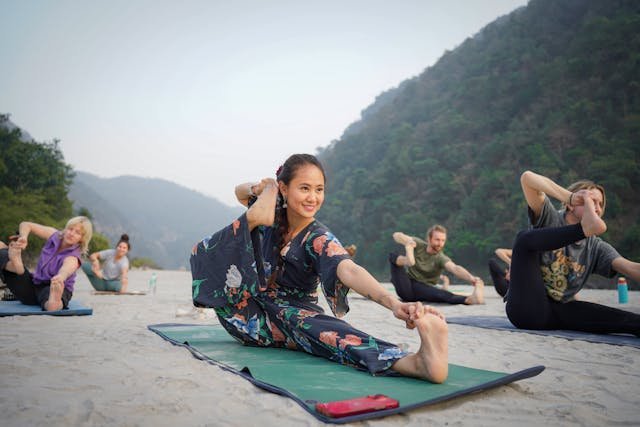
The island’s ubiquitous temples and daily offerings (canang sari) create an ambient spirituality that permeates even secular wellness experiences.
Ubud, with its terraced rice fields and artistic heritage, hosts some of the world’s most respected meditation centers.
Unique to Balinese healing is the integration of creative arts, spiritual practice, and community connection—a holistic approach that addresses multiple dimensions of mental health simultaneously.
Arizona Desert Retreats: Emotional Release in Vast Spaces
The stark beauty of Arizona’s desert landscapes provides an ideal setting for emotional processing and release.
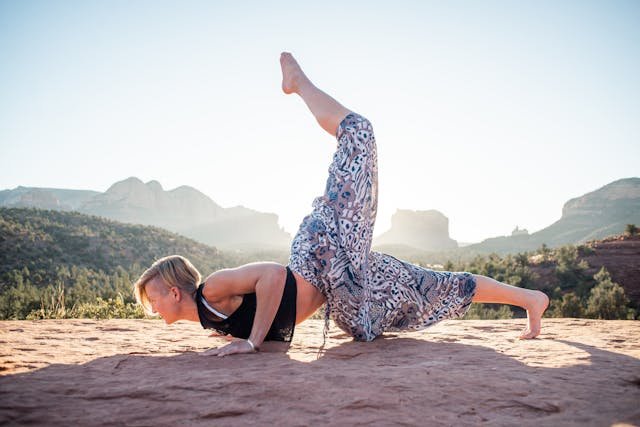
The expansive horizons and transparent air quality create a sense of possibility and perspective that’s particularly valuable for those working through grief, trauma, or major life transitions.
Many retreats in Sedona incorporate the region’s famed energy vortexes—areas believed to facilitate spiritual awakening and emotional healing.
While scientific evidence for vortexes remains limited, the psychological impact of these dramatic landscapes is well-documented, with visitors reporting accelerated emotional clarity and resolution.
Urban Wellness Sanctuaries: The New Frontier
As cities increasingly recognize the importance of well-being, urban wellness sanctuaries have emerged as counterpoints to the traditional remote retreat.
New York’s Inscape, London’s Yeotown, and Singapore’s COMO Shambhala offer immersive wellness experiences within metropolitan settings.
These centers typically employ advanced technology to create controlled healing environments, from electromagnetic shielding to circadian lighting systems that mitigate urban stressors.
Water-Based Healing Destinations: The Power of Blue Spaces
Iceland’s Thermal Springs: Geothermal Renewal
Iceland’s 130+ volcanic hot springs represent one of Earth’s most concentrated healing landscapes.
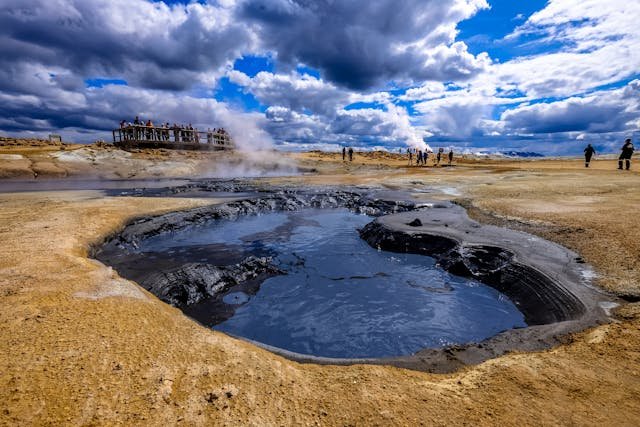
The Blue Lagoon, with its mineral-rich geothermal seawater, exemplifies how natural features can be thoughtfully developed for therapeutic use without losing their essential character.
The water’s unique combination of silica, algae, and minerals creates a natural treatment for skin conditions while the surrounding lava fields provide stark beauty for contemplation.
Less-known thermal areas like Mývatn Nature Baths in northern Iceland offer similar mineral compositions with fewer crowds, demonstrating that timing and location selection can dramatically affect the healing potential of water-based destinations.
Greek Coastal Retreats: Thalassotherapy and Ancient Wisdom
Greece combines millennia of healing traditions with some of the Mediterranean’s most pristine coastlines.
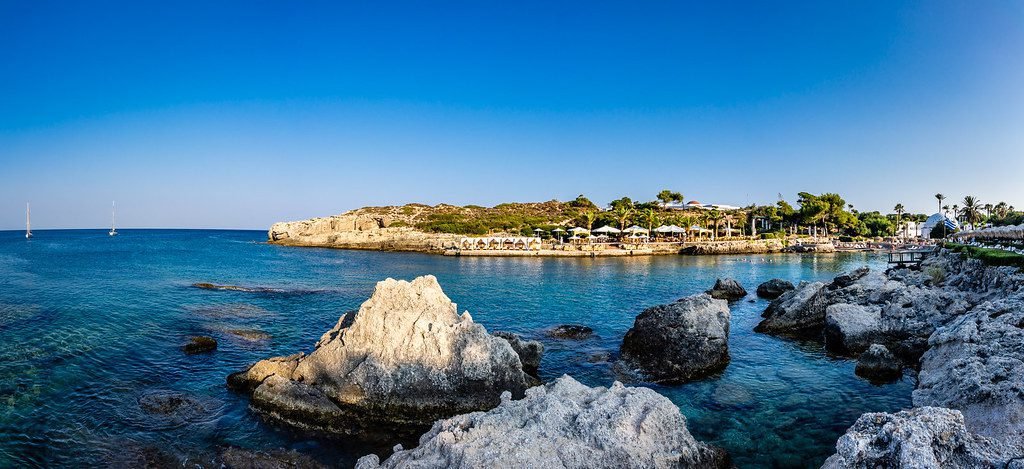
The original Hippocratic centers on islands like Kos integrate historical approaches with modern understanding of health, while specialized thalassotherapy centers utilize seawater, marine mud, and algae in targeted healing protocols.
The Greek approach to healing emphasizes rhythm—alternating activity with rest, social engagement with solitude, and physical challenge with nourishment.
This balanced approach reflects ancient Greek philosophical principles of moderation and stands in contrast to more extreme wellness methodologies.
The Dead Sea: Nature’s Healing Laboratory
At 1,412 feet below sea level, the Dead Sea creates a naturally occurring healing environment unlike any other on Earth.

The water’s 33.7% salinity provides exceptional buoyancy, reducing physical stress on joints and muscles.
The atmosphere above the water contains 8% more oxygen than at sea level, while reduced UV radiation (due to extra atmospheric filtration) allows for extended therapeutic sun exposure.
The mineral composition of the water and mud has proven benefits for skin conditions including psoriasis, eczema, and acne.
Research from the Dead Sea Research Center demonstrates that three weeks of climatotherapy here can produce remission of skin conditions for up to six months.
Tropical Healing Waters: Timing and Selection
Tropical destinations offer water-based healing year-round, but strategic timing can dramatically enhance their benefits.
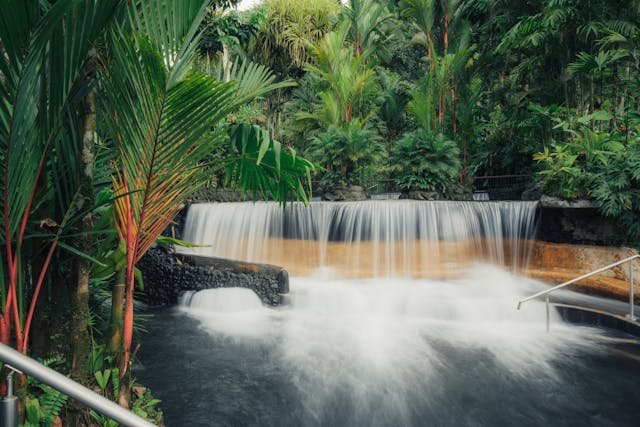
The Philippines’ hidden lagoons, Costa Rica’s hot springs, and Fiji’s secluded beaches each have optimal visiting windows that balance good weather with lower crowds:
| Destination | Optimal Healing Season | Why This Timing Works |
|---|---|---|
| Palawan, Philippines | Late May/early June | Shoulder season with fewer visitors, ideal water clarity |
| Arenal, Costa Rica | September-October | Reduced crowds, lush landscapes, afternoon rain patterns allow morning healing rituals |
| Savusavu, Fiji | April-May or October | Minimal rainfall, optimal water temperature, off-peak pricing |
Thalassotherapy Centers: Systematic Seawater Healing
Specialized thalassotherapy centers, particularly along France’s Brittany coast and in Tunisia, have developed systematic approaches to seawater healing.
These protocols typically involve progressive immersion in seawater at varying temperatures, marine mud applications, and algae treatments rich in iodine and trace minerals.
Studies from the European Journal of Physical and Rehabilitation Medicine indicate that structured thalassotherapy programs can reduce inflammatory markers and improve mobility in patients with rheumatic conditions, demonstrating that water-based healing extends well beyond temporary relaxation to create measurable physiological changes.
Mountain Retreats: Finding Clarity at Higher Elevations
Swiss Alps: The Perfect Balance of Challenge and Comfort
The Swiss approach to mountain wellness epitomizes balanced healing—challenging physical activity followed by sophisticated recovery.
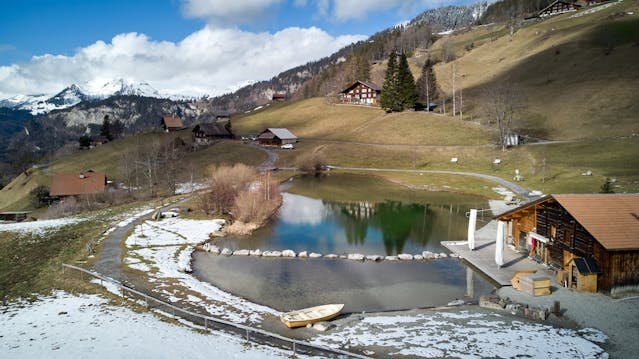
Destinations like Vals and Leukerbad combine vigorous hiking with precise hydrotherapy in mineral-rich thermal waters.
The elevation itself (typically 1,000-2,000 meters) stimulates physiological adaptation, including increased red blood cell production and improved oxygen utilization.
Unique to Swiss mountain retreats is the integration of precision healthcare with wellness offerings.
Many facilities offer advanced diagnostic testing alongside traditional spa treatments, creating personalized wellness plans based on individual health metrics rather than generic programs.
Himalayan Wellness Centers: Ancient Wisdom at the Roof of the World
In northern India, Nepal, and Bhutan, Himalayan wellness centers preserve some of humanity’s oldest healing traditions.
Ayurvedic centers in Rishikesh, Buddhist-influenced retreats in Bhutan, and Tibetan medicine practitioners in Dharamshala offer approaches to well-being that predate modern medical paradigms by thousands of years.
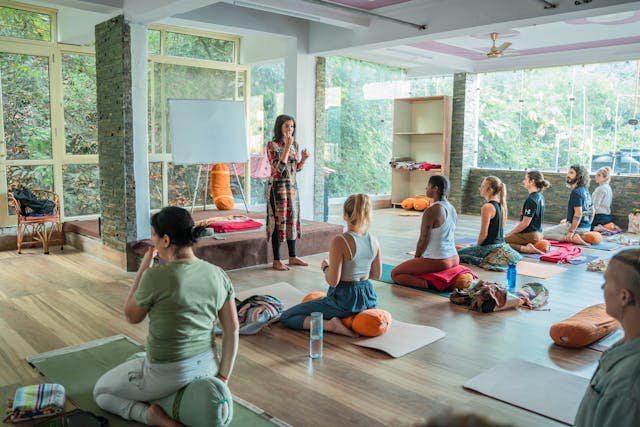
What makes these destinations unique is their authentic integration of spiritual practices with physical treatments. Rather than treating medicine, spirituality, and psychology as separate domains, Himalayan healing traditions address them as interconnected aspects of the same system.
This holistic perspective is increasingly validated by research in psychoneuroimmunology and integrative medicine.
Mountain Hot Springs: Altitude-Enhanced Healing
Hot springs at higher elevations offer distinctive benefits compared to their lowland counterparts.
The combination of reduced atmospheric pressure, increased negative ionization, and mineral-rich thermal waters creates optimal conditions for both physical and mental restoration.
Japan’s mountainous Nagano region hosts traditional onsen (hot springs) where healing rituals have been refined over centuries.
Colorado’s mountain springs in Pagosa Springs and Glenwood Springs demonstrate how indigenous healing knowledge can be preserved within modern wellness frameworks.
Altitude Considerations for Wellness Experiences
While mountain environments offer unique healing benefits, altitude requires thoughtful adaptation. Effective mountain wellness experiences typically include:
- Gradual acclimatization protocols (2-3 days of limited activity before full program engagement)
- Increased hydration (at least 50% more than at sea level)
- Adapted physical practices (reduced intensity for yoga, meditation, and exercise)
- Specialized nutrition to support increased metabolic demands
- Oxygen availability for those experiencing altitude discomfort
The most sophisticated mountain wellness destinations integrate these considerations seamlessly into their programs, ensuring that altitude enhances rather than hinders the healing experience.
Indigenous Mountain Healing Traditions
Mountain communities worldwide have developed specialized healing knowledge adapted to their unique environments.
In the Andes, traditional healers (curanderos) use altitude-adapted herbs and energy work that reflects the extremes of mountain living.
In the Carpathians, healing traditions incorporate the region’s exceptional plant diversity with over 1,300 medicinal species documented.
These indigenous traditions often include ceremonies acknowledging the spiritual dimension of mountains themselves—a perspective increasingly resonant for urban dwellers seeking connection with something larger than themselves.
Specialized Healing Retreats: Finding Your Perfect Match
Yoga-Focused Destinations: Beyond the Physical Practice
The most transformative yoga destinations offer much more than perfect postures.
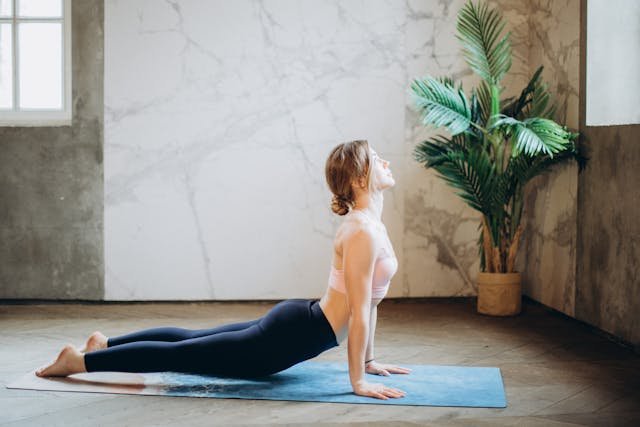
Centers like Kripalu in Massachusetts and Yoga Barn in Bali create immersive experiences where yoga philosophy permeates daily life. When evaluating yoga destinations, consider:
- Teacher-to-student ratios (ideally no more than 1:15 for meaningful guidance)
- Philosophy integration (how yoga ethics and principles extend beyond formal classes)
- Adaptability (whether classes accommodate various physical abilities and experience levels)
- Lineage authenticity (whether the teaching connects to established traditions rather than commercialized versions)
Digital Detox Retreats: Nervous System Reset
Digital detox retreats have evolved from simple “no phones allowed” policies to sophisticated programs for recalibrating attention and restoring natural cognitive rhythms.
The most effective programs address both the behavioral and neurological aspects of digital dependence.
Retreat centers in remote areas of Scotland, Montana, and Cambodia have pioneered protocols that typically include:
- A 48-hour “digital withdrawal” period with support for physical and emotional symptoms
- Nature-based activities specifically designed to restore attention capacity
- Analog creativity sessions to reactivate non-digital thinking pathways
- Practical planning for maintaining healthier digital habits post-retreat
Research from the University of California suggests that just three days of digital detox can significantly improve nonverbal cues and interpersonal connection, while studies from the Attention Restoration Institute demonstrate improved creative problem-solving after technology-free nature immersion.
Plant Medicine Retreats: Traditional Healing Under Pressure
As interest in traditional plant medicines grows, centers in Peru, Costa Rica, and Mexico have developed protocols for safely engaging with indigenous healing traditions. Responsible retreat centers typically:
- Require health screenings and application processes
- Provide integration support before and after ceremonies
- Employ both indigenous practitioners and Western medical support
- Maintain reasonable group sizes (typically under 15 participants)
- Demonstrate clear connections to traditional lineages and reciprocity with source communities
The intersection of ancient plant wisdom and modern science represents one of wellness travel’s most complex areas, with significant potential benefits alongside ethical and safety considerations that require careful navigation.
Silent Retreats: The Transformative Power of Not Speaking
Silent retreats have moved from strictly religious contexts to secular wellness applications, with centers like Spirit Rock in California and Hridaya in Mexico offering evidence-based approaches to the practice of silence.
Neuroscience research increasingly validates what contemplative traditions have maintained for millennia: that periodic abstention from speech creates measurable changes in brain function.
The most effective silent retreats create container experiences where participants temporarily step outside social conventions, allowing deeper self-awareness to emerge. Rather than simply not talking, comprehensive programs include:
- Non-verbal communication guidelines
- Progressive silence introduction (partial silence before full immersion)
- Physical practices that support the internal focus silence creates
- Skillful re-entry protocols for returning to verbal communication
Sleep Tourism: The Newest Frontier in Recovery Travel
Sleep-focused wellness destinations have emerged as a distinct category, addressing the global sleep crisis through environmental design, chronobiology, and sensory control. These specialized programs typically include:
- Circadian rhythm assessment and reset
- Environmental optimization (temperature, sound, light)
- Nutritional support for sleep architecture
- Cognitive techniques for addressing sleep anxiety
- Technology to measure sleep quality improvements
Six Senses resorts have pioneered multi-day sleep programs with measurable outcomes, while specialized centers like Lefay Resort in Italy combine Eastern and Western approaches to sleep medicine.
The most advanced programs produce not just immediate improvements but sustainable changes to sleep patterns that participants can maintain at home.
Sustainable Wellness Travel: Healing the Planet While Healing Yourself
Eco-Conscious Retreats: Beyond Basic Sustainability
Leading wellness destinations have moved beyond superficial eco-friendly measures to integrate regenerative practices into their core operations.
Playa Viva in Mexico and Fogo Island Inn in Newfoundland demonstrate how retreats can actually improve local ecosystems while providing exceptional healing experiences.
True sustainability in wellness travel involves:
| Dimension | Conventional Approach | Regenerative Approach |
|---|---|---|
| Energy | Reduced consumption | Net positive energy production |
| Water | Conservation measures | Watershed restoration and water purification |
| Food | Organic, local sourcing | On-site regenerative agriculture, forest gardens |
| Waste | Recycling programs | Closed-loop systems, composting, upcycling |
| Building | Efficient materials | Biophilic design, living buildings |
| Community | Local employment | Community ownership, profit-sharing, educational initiatives |
Regenerative Tourism: The Next Evolution
The most progressive healing destinations participate in regenerative tourism—a framework that seeks to leave destinations better than they were found.
This approach recognizes that true healing can’t happen in isolation from the health of local communities and ecosystems.

Regenerative wellness centers like The Datai in Malaysia and Kasiiya Papagayo in Costa Rica fund extensive conservation programs, create economic opportunities that reduce pressure on natural resources, and measure success not just by guest satisfaction but by concrete environmental improvements.
Supporting Local Communities Through Wellness Travel
Authentic community connection has emerged as a crucial component of healing travel.
Centers like Vana in India and Navana in Kenya have developed models where wellness travelers engage meaningfully with local communities through:
- Language exchange programs
- Traditional craft workshops led by community elders
- Community-led conservation initiatives
- Cultural heritage preservation projects
- Responsible economic exchange that respects local value systems
Beyond mere cultural tourism, these exchanges create reciprocal healing—addressing both the disconnection many travelers feel in their home communities and providing sustainable livelihoods for communities hosting wellness experiences.
Conservation and Wellness: Natural Partnerships
Some of the most innovative healing destinations directly fund conservation efforts, creating experiences where guests contribute to environmental protection through their presence.
The Misool Eco Resort in Indonesia uses retreat fees to support marine conservation, allowing guests to snorkel in the very coral gardens their visit helps protect.
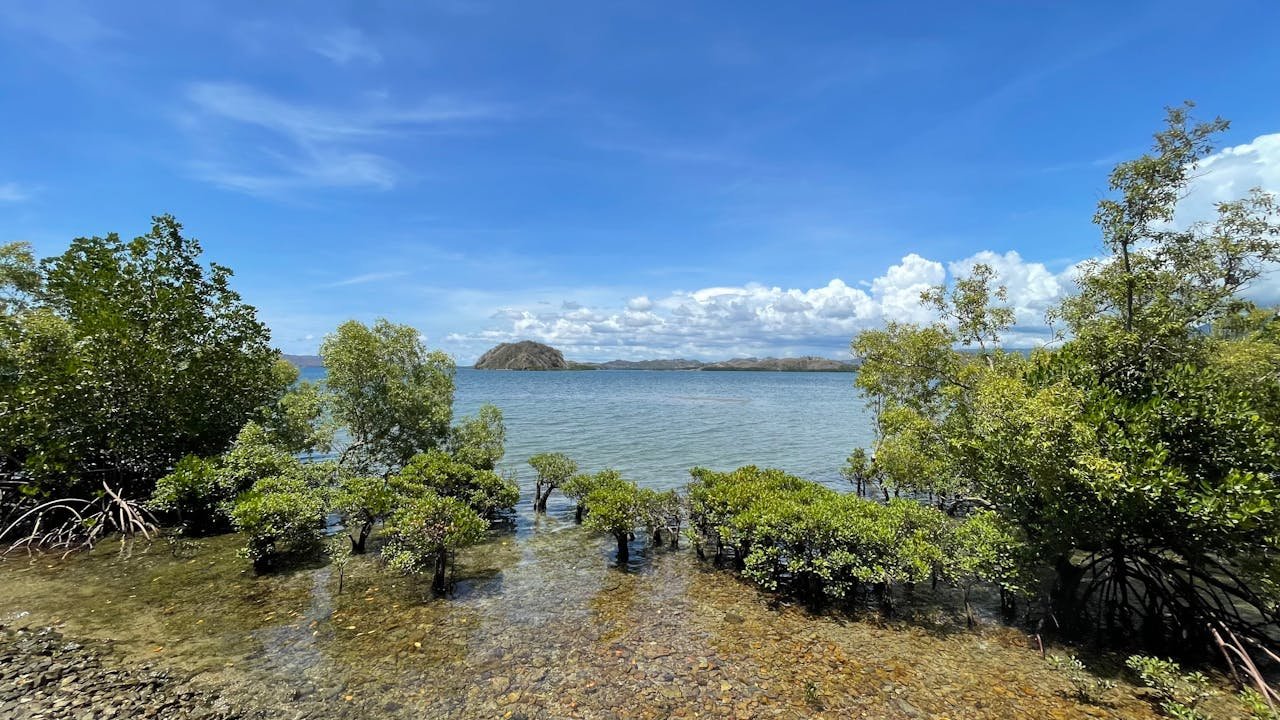
The Karkloof Safari Spa in South Africa combines wildlife conservation with wellness programming, where spa treatments fund wildlife rehabilitation programs.
Climate Adaptation in Traditional Healing Destinations
Climate change is significantly impacting many historical healing landscapes. The Dead Sea is shrinking at approximately one meter per year, Alpine wellness destinations face reduced snowfall and glacier retreat, and tropical healing centers increasingly contend with extreme weather events.
Forward-thinking destinations are implementing adaptation strategies:
- Developing seasonal flexibility in wellness programming
- Creating climate-resilient infrastructure
- Implementing water conservation technologies
- Engaging guests in climate education and advocacy
- Preserving traditional healing knowledge that may be threatened by environmental change
Planning Your Healing Journey: Practical Considerations
Booking Timelines for Optimal Experiences
Different types of healing destinations require different booking windows:
| Retreat Type | Ideal Booking Window | Rationale |
|---|---|---|
| Specialized therapy retreats | 6-9 months ahead | Limited spaces, often include pre-retreat assessments |
| Destination spas | 3-4 months ahead | Allow time for treatment customization and preparation |
| Wellness festivals | 4-6 months ahead | Early bird pricing, workshop selection priority |
| Self-directed healing trips | 2-3 months ahead | Flexibility while ensuring accommodation quality |
| Seasonal experiences | 12+ months ahead | Cherry blossom meditation in Japan, Northern Lights healing in Scandinavia |
Essential Questions Before Committing
Before booking any wellness experience, ask these critical questions:
- What qualifications do your practitioners have, and can these be verified?
- What is your approach to guests with specific health concerns or limitations?
- How do you measure success or effectiveness of your programs?
- What specifically is included in the price, and what costs might arise during my stay?
- How does your facility engage with the local community and environment?
- What support do you offer for maintaining benefits after departure?
- What is your cancellation policy, particularly for health-related cancellations?
- Can you accommodate my specific dietary needs or restrictions?
Extending Benefits: The Post-Retreat Integration
The most effective healing journeys include structured integration—practices and protocols for maintaining benefits after returning home. Best practices include:
- Gradual re-entry planning (buffer days between retreat and return to work)
- Accountability partnerships with other retreat participants
- Digital follow-up sessions with practitioners
- Specially designed home practices that realistically fit into daily life
- Journaling protocols to track ongoing benefits and challenges
- Community connections for ongoing support
Research indicates that the half-life of wellness benefits can be extended from weeks to months with proper integration support. The most sophisticated healing destinations have developed evidence-based protocols to help guests maintain their transformation long after departure.
The Essential Wellness Travel Packing List
Beyond standard travel necessities, a well-prepared wellness journey requires:
- Physical wellness: Water bottle with filtration, supportive footwear for multiple terrains, layering clothing for temperature regulation, personal yoga props if specific alignment is needed
- Mental wellness: Journal, digital detox support tools (books, analog games), meaningful personal objects for ritual or comfort
- Social wellness: Small gifts for authentic connection with local communities, photos of loved ones for personal altar spaces
- Spiritual wellness: Personal practice items (meditation cushion, prayer beads, sacred texts), privacy items for shared accommodations
- Practical wellness: Dietary supplements that may be unavailable at destination, translation cards for medical or dietary needs, comprehensive insurance that covers retreat cancellation
Navigating Dietary Considerations in Global Healing Destinations
Food forms a fundamental part of many healing traditions, yet dietary restrictions can create challenges. Successful navigation requires:
- Advance communication: Contact destinations directly about specific needs at least 30 days before arrival
- Cultural context: Research local food traditions to understand potential challenge areas
- Language preparation: Create dietary requirement cards in local languages (beyond basic translation apps)
- Flexibility planning: Identify which aspects of your diet are medical necessities versus preferences
- Emergency supplies: Pack shelf-stable backup options appropriate to your needs
Insurance Considerations for Wellness Travel
Standard travel insurance often excludes or limits coverage for retreat experiences, wellness treatments, and remote destinations. Specialized wellness travel insurance should cover:
- Retreat cancellation for medical reasons
- Emergency evacuation from remote healing destinations
- Alternative treatment injuries or complications
- Mental health emergencies
- Continuation of care if a treatment must be interrupted
As wellness tourism grows, specialized insurance products have emerged to address these unique needs, providing coverage that standard travel policies often exclude.
The Science Behind Healing Travel: Why It Actually Works?
Environmental Impact on Stress Physiology
Changing environments triggers profound physiological changes beyond the placebo effect. Research demonstrates that:
- Natural settings reduce cortisol by 16% and adrenaline by 26% compared to urban environments
- Coastal environments prompt increased serotonin production through ion exchange
- Altitude changes stimulate erythropoietin production and mitochondrial adaptation
- Circadian reset through natural light exposure improves sleep hormone regulation
- Novel environments increase neuroplasticity through BDNF (brain-derived neurotrophic factor) production
Nature Immersion: Evidence-Based Benefits
The scientific case for nature as medicine has grown substantially:
- 120 minutes of nature exposure per week correlates with significant health improvements (University of Exeter research)
- Forest environments increase natural killer cell activity by 56% for up to 30 days (Nippon Medical School studies)
- Blue space exposure improves cognitive performance on creative problem-solving tasks by 22% (University of Exeter)
- Fractals in nature (repeating patterns) induce alpha brainwave states associated with relaxation and creativity
- Negative ions in mountain and coastal environments reduce inflammation markers and improve respiratory function
Pattern Disruption: Breaking Cognitive Loops
Travel’s effectiveness partially stems from its ability to interrupt entrenched thought patterns:
- Behavioral pattern disruption: New environments remove habitual triggers and cues
- Cognitive load shifting: Novel surroundings require present-moment attention
- Perspective alteration: Physical distance creates psychological distance
- Identity liberation: Unfamiliar settings allow experimental self-concept exploration
- Neural pathway reorganization: Novel experiences create new dendrite connections
The Geography of Well-Being: Place-Specific Effects
Research increasingly demonstrates that specific geographical features create measurable differences in wellness outcomes:
| Environment | Measurable Effect | Research Source |
|---|---|---|
| Negative ion-rich environments (waterfalls, coastal areas) | 40% reduction in depression severity | Columbia University |
| High-altitude settings (1,500-2,500m) | Improved mitochondrial efficiency, 31% increase in BDNF | German Aerospace Center |
| Dense forest environments | 16% decrease in cortisol, 52% increase in relaxation brain waves | Chiba University |
| Mineral-rich hot springs | Reduced inflammatory markers, improved skin barrier function | Hungarian Balneology Research Institute |
| Desert environments | Improved melatonin regulation, accelerated circadian reset | University of Arizona |
Neuroscience and Modern Retreat Design
Leading wellness destinations increasingly incorporate neuroscience principles into their design:
- Sensory calibration: Carefully designed progression from sensory reduction to controlled stimulation
- Psychological safety: Physical spaces that signal security to the limbic system
- Flow state architecture: Environments designed to induce optimal challenge-skill balance
- Cognitive restoration: Spaces that minimize directed attention fatigue
- Circadian optimization: Lighting systems that support natural sleep-wake cycles
The most advanced healing centers collaborate with neuroscientists to create environments specifically designed to activate brain states associated with healing, creativity, and well-being.
Wellness Travel on a Budget: Finding Affordable Healing
Beyond Luxury: Accessible Healing Destinations
Meaningful wellness experiences need not require luxury budgets. Alternative approaches include:
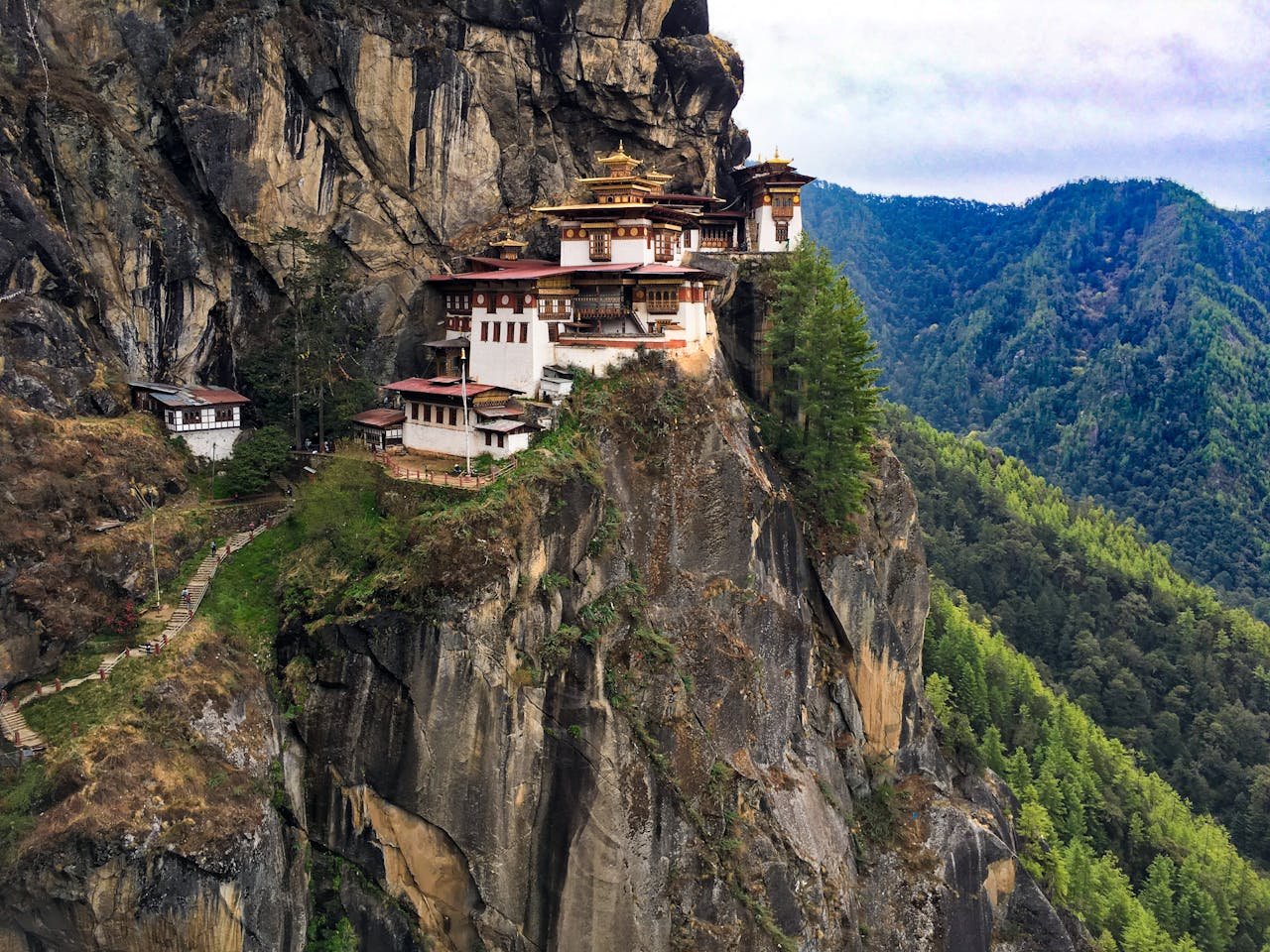
- Monastery stays: Many Buddhist and Christian monasteries offer simple accommodations with meditation instruction for donations or modest fees
- Wellness hostels: A growing category combining affordable shared lodging with quality wellness programming
- Volunteer wellness: Programs like Karma Yoga at Yasodhara Ashram exchange service for retreat participation
- Wellness camping: Destinations like Hot Springs National Park allow nature immersion with thermal healing at minimal cost
- Urban wellness: City-based wellness centers offering day programs without accommodation costs
Off-Season Advantages: Timing for Value
Strategic timing can dramatically reduce costs while sometimes enhancing experiences:
| Destination | Peak Season | Value Season | Benefits of Value Season |
|---|---|---|---|
| Bali wellness centers | June-August | January-March (except Lunar New Year) | Lower rates, smaller classes, deeper connection with teachers |
| Greek island retreats | July-September | May and October | More authentic local experiences, perfect temperatures for active wellness |
| Japanese onsen | Cherry blossom and autumn | Late May and November | More thermal pool space, focused attention from practitioners |
| Costa Rican healing centers | December-April | May-June, September-November | Lush landscapes, fewer crowds, 30-40% discounts |
Membership and Loyalty: Systematic Savings
Several approaches can create systematic wellness travel savings:
- Wellness membership networks: Organizations like Healing Hotels of the World offer member discounts across multiple properties
- Retreat center memberships: Centers like Kripalu and Omega offer annual memberships with significant course discounts
- Wellness sabbaticals: Longer stays (21+ days) often qualify for substantial discounts (30-50%)
- Last-minute wellness: Apps like Retreat Guru and Last Minute Retreats list unfilled spaces at reduced rates
- Wellness house-sitting: Platforms connecting retreat owners with property caretakers during off-seasons
Self-Guided vs. Facilitated Healing
While facilitated programs offer structure and expertise, self-guided approaches can create substantial savings:
| Experience | Facilitated Cost | Self-Guided Alternative | Potential Savings |
|---|---|---|---|
| 7-day meditation retreat | $1,500-3,000 | Meditation apps + affordable accommodation near nature | 70-80% |
| Spa hydrotherapy circuit | $150-300 daily | Research-based contrast therapy at public hot springs | 90% |
| Guided forest bathing | $75-150 per session | Self-guided nature immersion with online resources | 100% |
| Yoga retreat | $1,800-3,500 weekly | Local classes + natural setting accommodation | 60-70% |
Balancing Splurges and Savings
Strategic splurging can maximize healing benefits while maintaining budget discipline:
- Invest in expertise: Prioritize one or two sessions with highly qualified practitioners rather than multiple generic treatments
- Economize on luxury: Choose modest accommodations near premium healing resources rather than premium accommodations with average healing resources
- Extend through technology: Use digital platforms to extend in-person learning with more affordable virtual follow-up
- Leverage local knowledge: Connect with local wellness communities through platforms like Meetup for insider access to free or low-cost healing experiences
- Prioritize transformation: Invest in experiences with evidence-based, lasting benefits rather than temporary comfort or luxury
Multi-Generational Wellness Travel: Healing Experiences for All Ages
Family Wellness: Beyond Kids’ Clubs
The family wellness market has evolved dramatically from basic “spa plus childcare” models to truly integrative experiences.
Leading destinations like Schloss Elmau in Germany and Miraval Berkshires in Massachusetts have pioneered programming that creates parallel wellness journeys for different age groups while including meaningful shared experiences.

Effective family wellness experiences typically include:
- Age-appropriate wellness education (nutrition, mindfulness, emotional intelligence)
- Shared rituals that accommodate different ability levels
- Alternating separation and togetherness in thoughtful rhythms
- Cross-generational learning opportunities
- Sufficient flexibility to accommodate varying energy levels and interests
Age-Appropriate Healing Activities
Specialized wellness activities by age group enhance healing benefits:
| Age Group | Beneficial Activities | Example Destinations |
|---|---|---|
| Children (4-12) | Nature exploration, sensory gardens, animal interaction, playful mindfulness | Tyler Place (Vermont), Forte Village (Sardinia) |
| Adolescents (13-17) | Adventure therapy, creative expression, peer connection with light facilitation | Aro Ha (New Zealand), Blackberry Farm (Tennessee) |
| Young adults (18-30) | Physical challenge, purpose exploration, digital/life balance, community building | Habitas (Mexico), The Retreat (Costa Rica) |
| Midlife (31-60) | Stress reduction, sleep optimization, hormone balance, lifestyle reassessment | Kamalaya (Thailand), SHA Wellness (Spain) |
| Seniors (61+) | Mobility maintenance, cognitive stimulation, legacy work, social connection | Canyon Ranch (Arizona), Rancho La Puerta (Mexico) |
Benefits of Shared Wellness Experiences
Research increasingly demonstrates that multi-generational wellness experiences create unique benefits:
- Knowledge transfer: Traditional healing wisdom passes naturally between generations
- Role flexibility: Adults experience playfulness while children develop responsibility
- Narrative cohesion: Shared experiences strengthen family stories and identity
- Vulnerability modeling: Adults demonstrating self-care normalizes wellness for younger generations
- Extended support networks: Creates wellness accountability relationships that extend beyond immediate family
Planning Considerations for Diverse Ages and Abilities
Successful multi-generational wellness travel requires thoughtful planning:
- Pace management: Building in sufficient rest periods for both youngest and oldest participants
- Privacy balance: Creating both communal spaces and age-appropriate retreat options
- Skill differentiation: Selecting activities with modifications for different ability levels
- Value alignment: Clarifying shared wellness priorities before selecting destinations
- Expert guidance: Working with specialized family wellness travel planners who understand developmental needs
Adapting to Diverse Family Structures
Modern family wellness destinations increasingly accommodate diverse family structures:
- Single-parent wellness: Programs with appropriate supervision and adult connection
- Blended family healing: Experiences that respect and strengthen new family bonds
- Skip-generation travel: Specialized grandparent-grandchild programming
- Family-of-choice wellness: Retreats that welcome non-traditional family structures
- Caregiver respite: Programs offering specialized support for those with caregiving responsibilities
Virtual and Hybrid Healing Experiences: The New Frontier
Evolution of Digital Wellness
The digital wellness landscape has evolved from simple meditation apps to sophisticated virtual healing environments:
| Phase | Timeframe | Characteristics | Examples |
|---|---|---|---|
| First Wave | 2010-2015 | Basic tracking, simple guidance, limited personalization | Early meditation apps, fitness trackers |
| Second Wave | 2016-2020 | Improved engagement, community features, better content | Subscription wellness platforms, online yoga |
| Third Wave | 2021-Present | AI personalization, biofeedback integration, hybrid models | VR wellness environments, biomarker-responsive programming |
Technology-Enhanced Physical Experiences
Advanced healing destinations increasingly integrate technology to enhance rather than replace physical experiences:
- Biomonitoring integration: Real-time adjustment of treatments based on physiological data
- Virtual preparation: Pre-arrival programs that optimize retreat benefits
- Customization engines: AI systems that tailor wellness programming to individual needs
- Mixed reality healing: Augmented experiences that combine physical environments with digital elements
- Haptic technology: Therapeutic touch simulation for enhanced healing experiences
Blending Virtual Preparation with Physical Travel: The New Era of Hybrid Wellness Tourism
A transformative model of hybrid well-being travel is reshaping how we approach healing and rejuvenation.
By combining the convenience of digital tools with the depth of immersive, in-person experiences, this approach offers a holistic journey that begins long before the traveler sets foot at their destination.
1. Assessment Phase
Before travel begins, individuals undergo virtual health assessments, lifestyle screenings, and one-on-one consultations with wellness professionals.
This helps tailor the experience to specific needs and ensures participants are well-prepared physically and mentally.
2. Preparation Phase
Participants engage in personalized digital programs, which may include fitness routines, attentiveness practices, nutritional guidance, or educational modules.
These online sessions create a strong foundation and mindset for the healing journey ahead.
3. Immersive Phase
Upon arrival at the wellness destination, travelers experience in-depth, hands-on treatments, therapies, and activities.
With distractions minimized, full presence and engagement allow for deep healing and transformation in a serene, supportive environment.
4. Integration Phase
After returning home, structured virtual support continues the journey.
Follow-up consultations, coaching sessions, and community forums help travelers integrate the lessons and habits gained during the trip into everyday life, ensuring lasting impact.
How Effective Are Virtual Reality Wellness Experiences Compared to Physical Travel?
Virtual reality (VR) wellness experiences are gaining popularity for their accessibility and convenience.

They allow users to meditate on a beach, practice yoga on a mountain, or explore tranquil forests—all from the comfort of home. This can be especially useful for people with mobility challenges or limited time.
While VR offers an immersive escape, it lacks the full sensory engagement of physical travel.
The feeling of warm sun on your skin, fresh air, and real human connection at a retreat are difficult to replicate digitally.
These physical elements often play a key role in emotional and physiological healing.
However, VR can still be highly effective for stress reduction, mindfulness, and habit formation. Studies have shown that guided VR meditations can lower anxiety and improve focus.
When used regularly, it can complement traditional wellness practices.
Ultimately, VR wellness isn’t a replacement for physical travel—but rather, a supplement. It’s ideal for daily mental resets and preparation for in-person experiences, offering a powerful bridge between everyday life and deeper wellness journeys.
FAQs about healing travel destinations
What makes a destination truly qualify as a healing destination?
A genuine healing destination offers more than just picturesque views or luxury accommodations. It provides a harmonious blend of natural beauty, holistic services, and cultural experiences that facilitate healing on multiple levels.
The best healing destinations feature environments where the healing power of nature is palpable—whether through negative ions at waterfalls, mineral-rich hot springs, or the grounding energy of ancient forests.
They typically offer a variety of healing modalities and healing practices guided by experienced practitioners who understand the connection between mind, body, and spirit. What truly sets a healing destination apart is its ability to create space for personal transformation, allowing visitors to disconnect from daily stressors and reconnect with themselves.
The environment should support both structured wellness activities and opportunities for quiet reflection, ultimately facilitating a healing journey that continues long after the traveler returns home.
Whether it’s the energy vortexes of Sedona, the serene rice fields of Ubud, or the mineral waters of European spa towns, these places share the common quality of supporting holistic healing and renewal.
How can I plan a wellness tourism experience that truly meets my recovery needs?
Planning an effective wellness tourism experience begins with honest self-reflection about your specific recovery needs. Are you seeking physical rejuvenation, emotional healing, spiritual healing, or perhaps all three? Start by identifying your primary goals—whether that’s stress reduction, physical rehabilitation, grief processing, or simply disconnecting from technology.
Research wellness retreats and wellness centers that specialize in addressing your particular concerns, paying attention to their philosophy and specific offerings.
Consider the healing modalities that resonate with you personally: do you thrive in meditation retreats, yoga retreats, or do you prefer more active recovery through outdoor adventures in a breathtaking landscape? The climate and environment matter significantly—some people heal better in mountain settings, while others need the ocean or desert.
How do I know if a wellness retreat is authentic or just marketing hype?
Look for transparency in their healing approaches, qualified practitioners with verifiable credentials, and genuine guest reviews (not just testimonials).
Authentic retreats typically provide detailed information about their methodologies, have established roots in the local community, and focus more on long-term transformation than quick fixes. Ask about their staff-to-guest ratio and whether treatments are standardized or personalized.
I’m traveling solo for healing—what safety considerations should I keep in mind?
Research the location’s safety reputation and the retreat’s security measures. Choose places that cater to solo travelers with community dining options and group activities.
Share your itinerary with someone at home and establish check-in routines.
Consider retreats that offer airport transfers and have 24-hour staff. Join online communities for solo wellness travelers to gather recent experiences and recommendations.
How can I maintain dietary needs or restrictions during well-being travel?
Communicate your needs during booking and follow up before arrival. Research local food culture and learn key phrases to explain restrictions in the local language. Consider accommodations with kitchenettes for self-preparation options.
Pack emergency snacks compatible with your diet. Many healing destinations now pride themselves on accommodating various dietary needs, but remote locations may have limitations.
What’s the difference between a medical spa, wellness retreat, and healing vacation?
Medical spas focus on treatments supervised by medical professionals, often incorporating modern technology and traditional therapies. Wellness retreats typically emphasize holistic lifestyle changes through structured programs including fitness, nutrition, and attention.
Healing vacations are more self-directed, allowing you to include wellness elements within a broader travel experience while setting your own pace and priorities.
How do I measure the success or effectiveness of my healing travel experience?
Before departure, identify specific wellness goals and baseline measurements (sleep quality, stress levels, specific symptoms).
Journal throughout your journey to track changes. Consider using wearable technology to monitor physiological markers. Schedule a post-trip assessment with a healthcare provider if appropriate.
Remember that some benefits emerge gradually after returning home, so continue monitoring for 3-6 months. Success might manifest in subtle ways beyond obvious physical changes.


